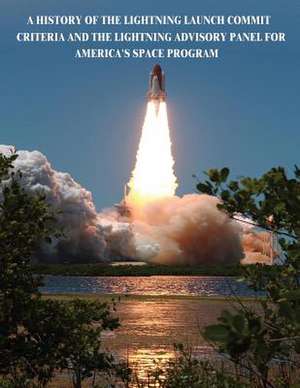A History of the Lightning Launch Commit Criteria and the Lightning Advisory Panel for America's Space Program
Autor National Aeronautics and Administrationen Limba Engleză Paperback
Preț: 169.07 lei
Nou
Puncte Express: 254
Preț estimativ în valută:
32.36€ • 33.52$ • 27.00£
32.36€ • 33.52$ • 27.00£
Carte disponibilă
Livrare economică 01-15 martie
Preluare comenzi: 021 569.72.76
Specificații
ISBN-13: 9781502449030
ISBN-10: 150244903X
Pagini: 252
Dimensiuni: 216 x 279 x 13 mm
Greutate: 0.59 kg
Editura: CREATESPACE
ISBN-10: 150244903X
Pagini: 252
Dimensiuni: 216 x 279 x 13 mm
Greutate: 0.59 kg
Editura: CREATESPACE
